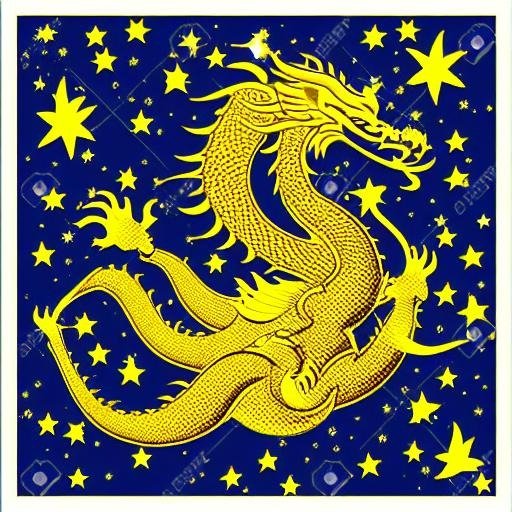Primordial Dragon
In the Beginning, there was only the primordial dragon,from whose eggs were born the first elementary gods: Abbon Shabai, God of Wisdom, Tyr, Goddess of Earth, Van, god of the water, Meterion, the first god of Fire, Fer, goddess of Fortune and Kallas, god of wind, Verin, god of the artisans and Khair, god of evil, death and hate. This was the first generation of gods. After them, 5000 years after, the Primordial dragon lay down the last eggs, from which there were born the lesser gods, the Spirits of the lakes, the Ladies of Honey, the assistants of the Goddess Tyr, and the Sphenetai ( half human/half lizards) which became the servants of Van and Khair.The Primordial Dragon is, according to all davidovian peoples and the branches of their religion, the first queen of the Universe and the divine mother of the most powerful gods. She was the Queen of the Cosmos before abdicating in Abbon Shabai.
The beautiful and bright Queen of the Skies
Most Davidovian myths coincide in describing the Primordial dragon as a giant Dragon, bigger that any of the continents of Yeia, with golden scales that cover most if her body aside from the tail that had stripes made of lapis lazuli scales. She had red eyes like rubies and deer like horns on her head. The Primordial dragon had reptilian paws similar to lizards and a pig nose. In Ikarian and Oronai art, the primordial dragon also has a pair of bat like wings, while in Seris art the dragon has no wings at all.Inspiration and place in mythology
The Primordial dragon is the god of creation in the Davidovian mythology, she was the mother of all the gods, and thus all the planets, stars and all the celestial objects. According to this mythology, once she abdicated from her position in favour of Abbon Shabai, the god of the Sun, He built a palace for her in heaven, and because she lived most of the time in the eternal night before the birth of Abbon Shabai and the stars, she likes to go out and have a walk at night , when she can be seen in all her glory in the skies ( this, of course refers to the arm of the galaxy, that can only be seen during night time. And the strips of the tail of dragon could be a reference for the different forms of the cloud of gas of the arm of the Galaxy seen from Yeia.) Of course, since she abdicated as Queen of the Kosmos, and replaced by her eldest son, she hasn't interfered in the lives of both the gods and mortals. If she decided to do so, that could only mean one thing, the end of times!.Fun facts
The Primordial dragon is one of the most represented mythological creatures in the davidovian cultures, specially the Ikarian and the Seris. In these cultures, the Primordial dragon also represented Cosmic and earthly Balance. For example, after a brief civil war in the Ikarian Empire in the 150s BP, the victorious emperor minted coins depicting the primordial dragon on the obverse, representing the returning of balance and peace to the Empire. After the fall of the Ikarian Empire in 460 AP, the Primordial Dragon became the symbol of the Kingdom of Drubris, with the same purpose of presenting the Dubrian Kings as the ones that would restore balance to the Ikarian-Blatian world, expelling the barbarians and restoring the old empire.
In Seria too, the Primordial dragon was frequently depicted, for example two golden figures of the primordial dragon stood at each side of the roof of the Seris Imperial palace in Sakouramish, and another gold sculpture of the Primordial Dragon also decorated the Imperial Throne at the Palace of the Thousand Columns but probably was melted down were the palace was destroyed.



I love love love how you described the different ways it is depicted in artwork and what it represents symbolically! She is an excellent Creator, well done!